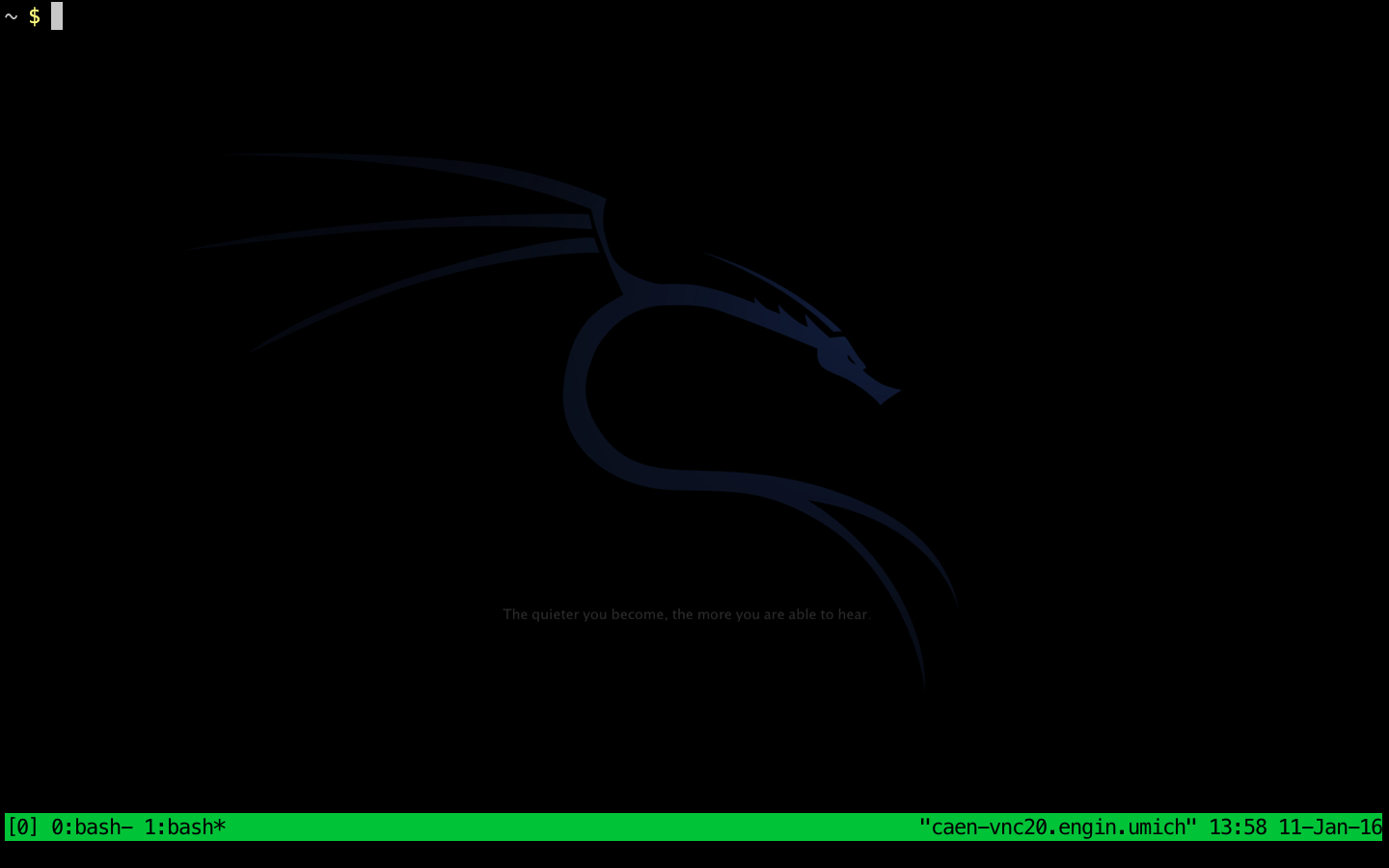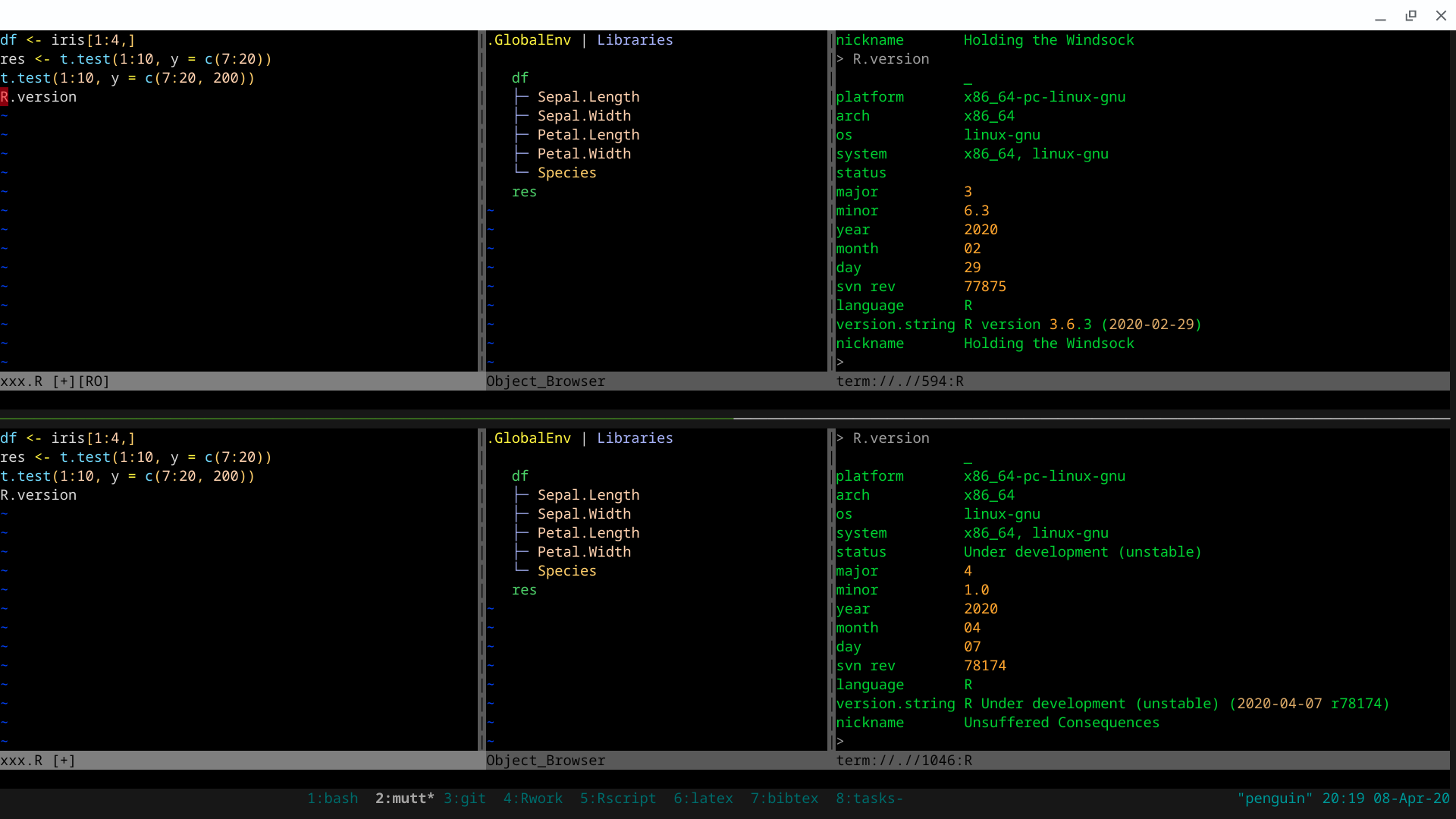

There is also a default binding (Prefix ,) that will prompt you for a new name and rename the window. Rename an existing window: rename-window 'new name' You could re-bind c (the default key used to create a window) to incorporate a “default name” of your choosing: bind-key c new-window -n 'default name' Otherwise, there are several ways to manually name/rename a window:Īt creation time with -n: new-window -n 'some name'
#TMUX NEW WINDOW WINDOWS#
With that configuration the default window name (for windows created without an explicit command) would be whatever you named the shell script. 1 Answer Sorted by: 3 Plagiarized and altered a bit from another of my answers, here's an example: TMUXSESSIONNAME'scratch' tmux new-session -d -s TMUXSESSIONNAME >/dev/null tmux new-window -t TMUXSESSIONNAME tmux send-keys -t TMUXSESSIONNAME:1. It would be a bit round-about, but you could put your default command in a shell script and point your default-command to that script instead. Here you dont have to wait that long, you attach before tmux new-window runs. With the previous solution you would have to wait until all of them finish.

Your windows are probably defaulting to reattach-to-user-namespace because you that is the first interesting bit of your default-command value. (tmux new-session -d sleep 5 tmux new-window) & sleep 2 tmux attach-session sleep 5 simulates commands that take time. (If you saw my previous answer, I initially thought you can use the environment but of course that is per session not per window, it has to be a user variable.There is no global default window name that is applied to all new windows they default to (part of) the first “word” of the command (or the default shell if there is no command). I have the following in a shell script that I call dev-tmux. You can give each tmux session a unique name, create windows within each session, and put those windows into panes.
#TMUX NEW WINDOW INSTALL#
Then you can use it in your C-\ binding ( run-shell expands formats): bind 'C-\' run 'tmux splitw "ssh could do similar with the window name if it is already the host: bind 'C-\' run 'tmux splitw "ssh \"#\""'īut that won't work if you change the format of the window name, or if you rename the window manually. 24 Answers Sorted by: 357 You can write a small shell script that launches tmux with the required programs. Updated Nov 8, 2022, 3:41 pm EDT 9 min read fatmawati achmad zaenuri/ Install tmux from your Linux distribution's repository, then run 'tmux' in the Linux terminal. Then you want to bind a key to split the window and also ssh into server2? Is that correct?Īssuming this is right, this is the relatively common question of getting tmux to do something based on the existing state of the current window, and the answer is you need to tell it the state before your create the window, or from inside the window.īecause you already have shortcuts to create the window you could store the server name in your C-s binding and then use it in your new C-\ binding.įor example, change your C-s binding to set a user variable on the window with the target host, something like this - note this is doing the set-option from inside the new window, but before it runs ssh: bind C-s command-prompt -pserver 'neww "tmux set -w \"%1\" ssh \"%1\""' So you ssh into server1 and run tmux, then ssh into server2 from inside tmux. Thank you for any any direction, comments, questions. At that point I'd probably just do another C-S(get prompted for ssh servername) and join the window(which saying that isn't a bad idea as an alternative) The nested windows would then split and show another pane on that server.

The closest way we have found is nesting and using a plugin to change which server tmux would respond to the prefix. tmux (Ricardo Gerardi, CC BY-SA 4.0) Now that you're connected to tmux, you can run any commands or programs as you normally would. This command launches a tmux server, creates a default session (number 0) with a single window, and attaches to it. nf and scripts all follow me to every server.Įach window has the server name set, though in the future we may try to get it to servername,task (example"srv001,htop") depends on how this works out :) Get started with tmux To start using tmux, type tmux on your terminal. What I would like to do is bind C-\ and C-"-" to split the current window and ssh into that same server instead of it opening a window for the main server. The way we use tmux is to ssh into a main server, we will then open tmux, and create a new window for each server we ssh into (C-S, prompts for a server and this will then create a new windows and ssh into the server).


 0 kommentar(er)
0 kommentar(er)
